Happy Birds in Termite Time
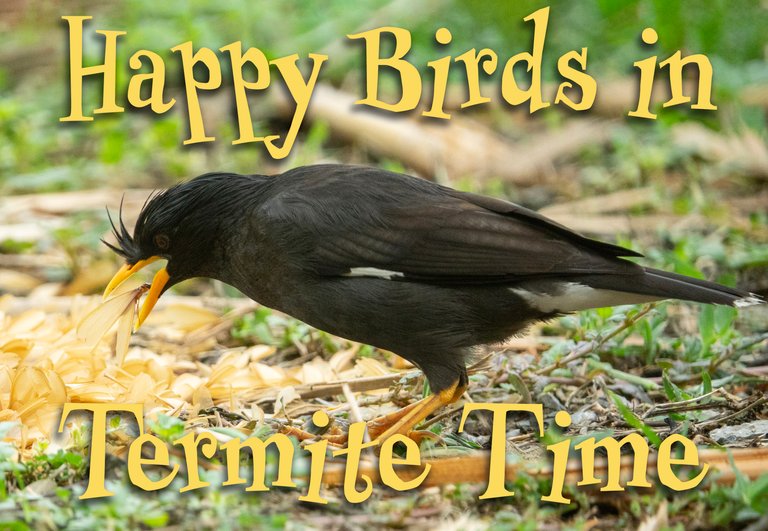

After rainless months a heavy afternoon shower meant that the evening would be thick with flying termites. Despite the running around to close windows and turn off lights to keep them out of the house, I always find these termite eruptions thrilling. And so do the local birds.
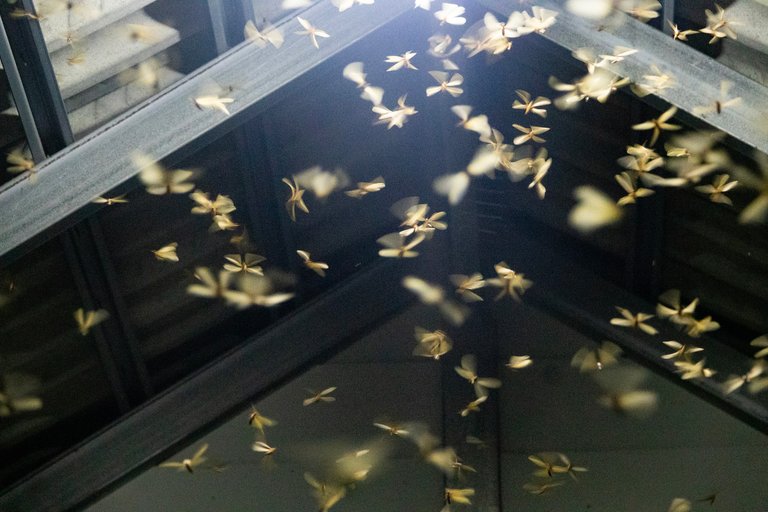
Tokay Gecko
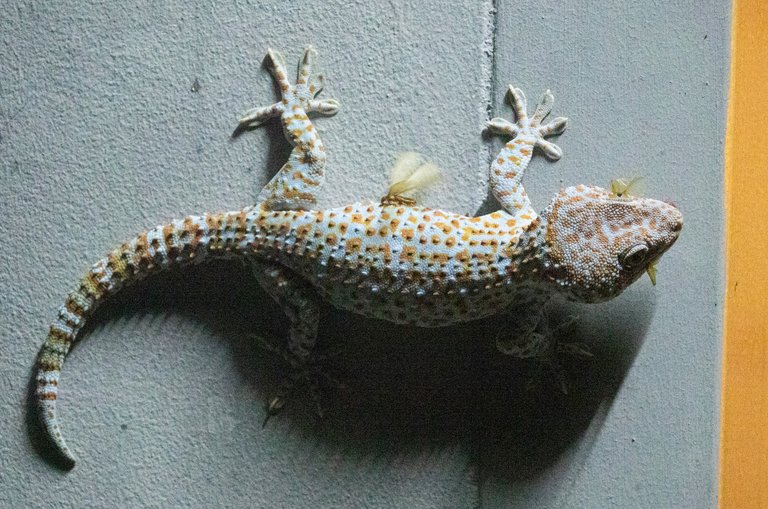
During the actual after-dark flight it is the tokay geckoes that are the most active hunters. However, both Indochinese Rollers and Red-wattled Lapwings made use of our outdoor lighting to feed through the evening. Then arrived a new bird for our garden: a pair of Spotted Owlets. They took termites off the ground but were very sensitive to my presence and disappeared quickly before I managed to get any photos. However, they did eventually come back and I got a few distant shots.
Indochinese Roller
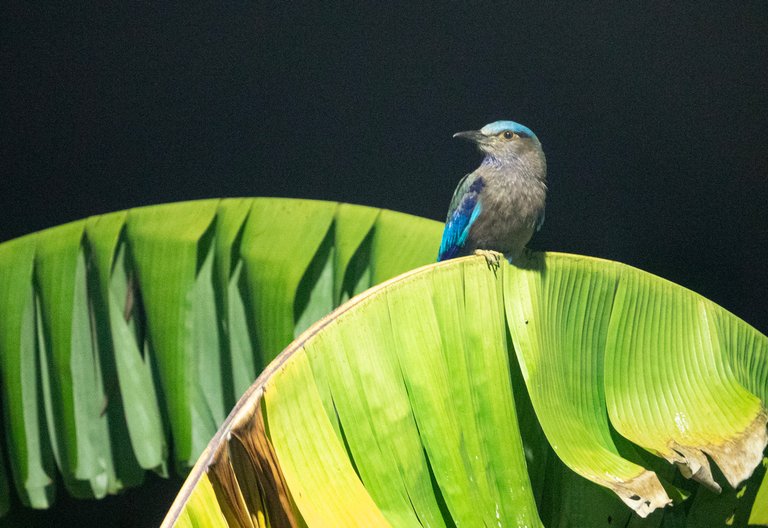
Red Wattled Lapwing
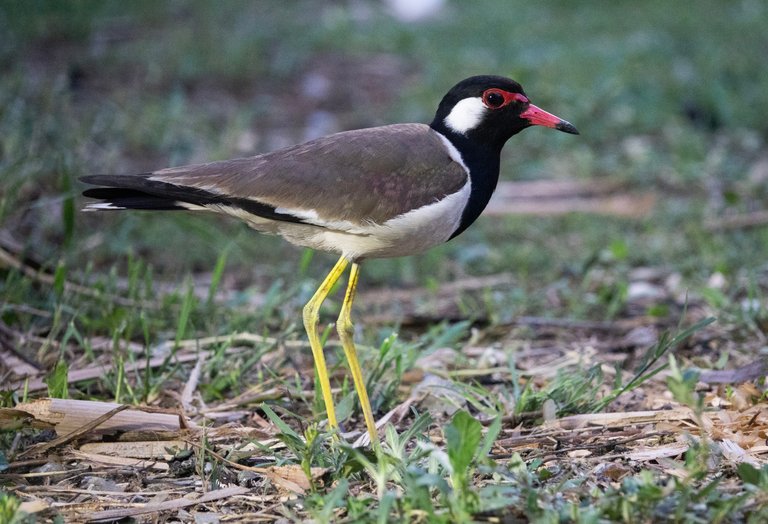
Spotted Owlets

The next morning I found the striking sight of circular piles of termites on the floor tiles under the lights of our open-sided sala. Rather than crawl away to all the cracks and crevices around the garden they were trying to hide underneath each other! Several birds, including Magpie Robins, Streak-eared Bulbuls, Pied Starlings and Mynas, were picking them off.
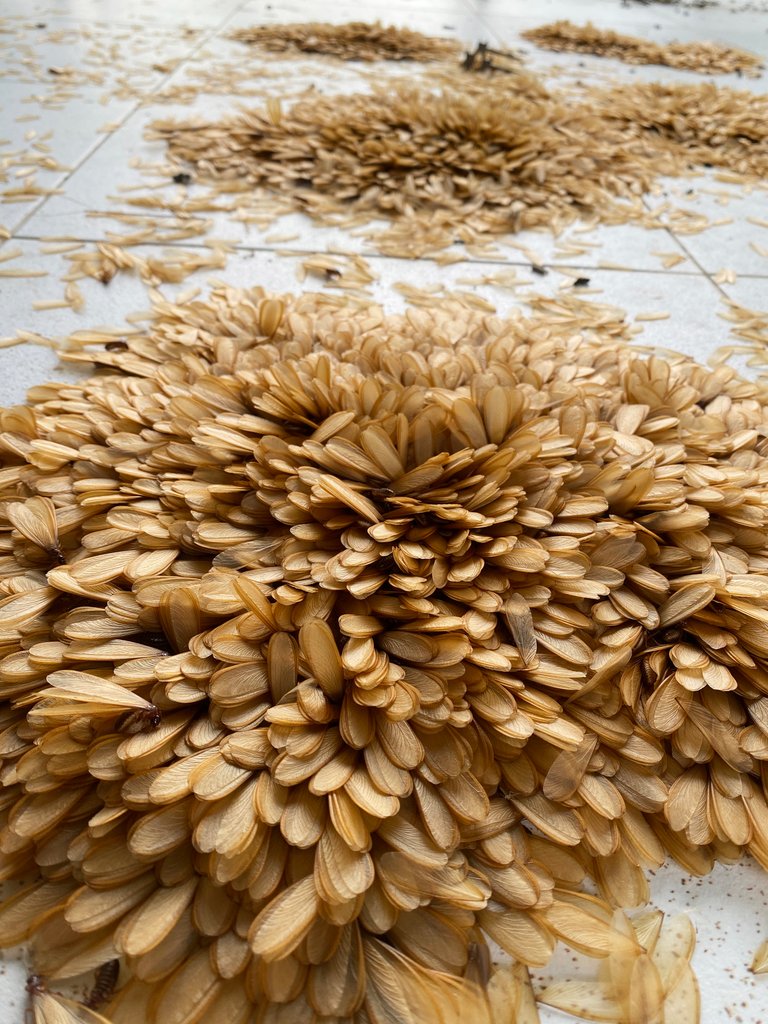
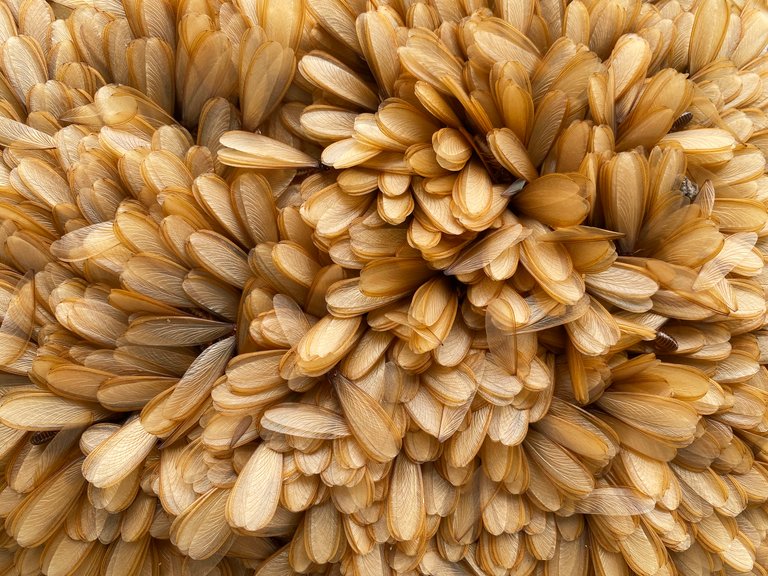
Oriental Magpie Robin
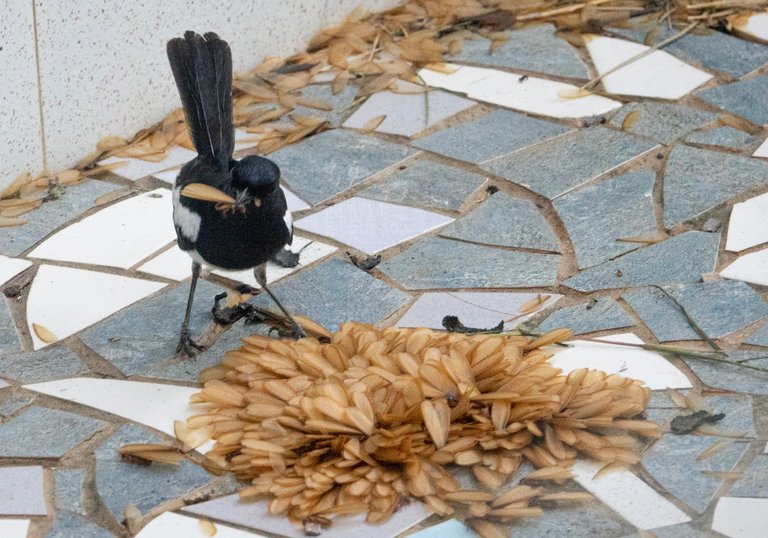
Asian Pied Starling
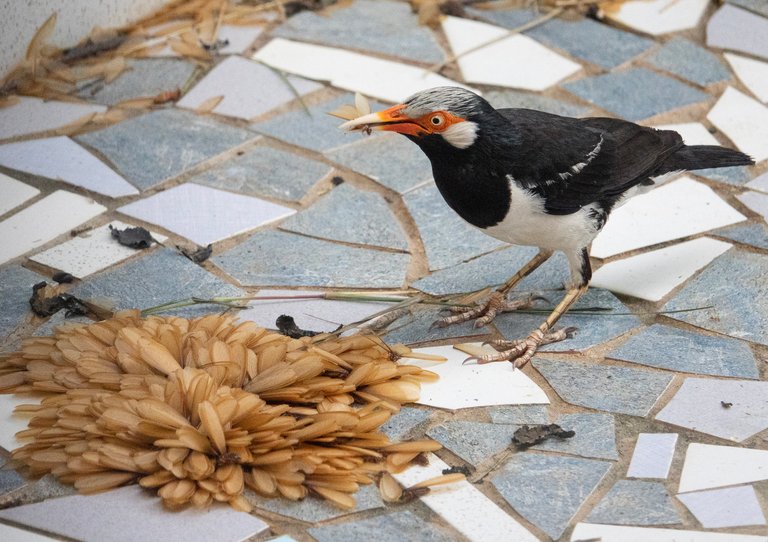
Streak-eared Bulbul
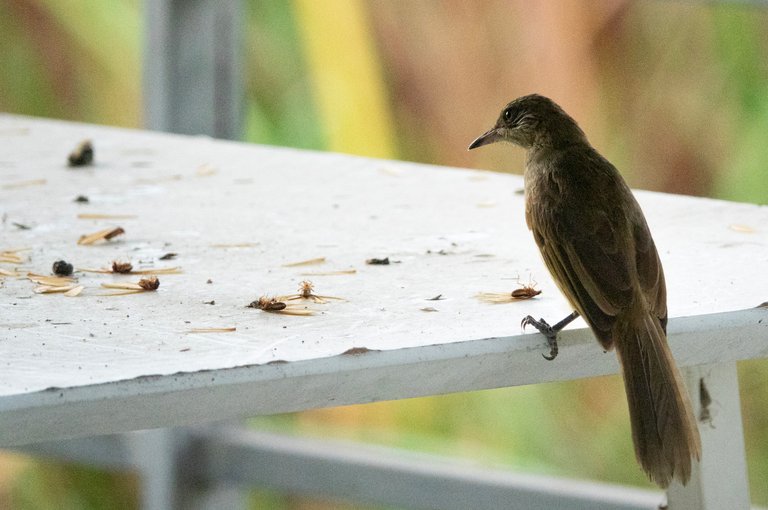
Common Myna
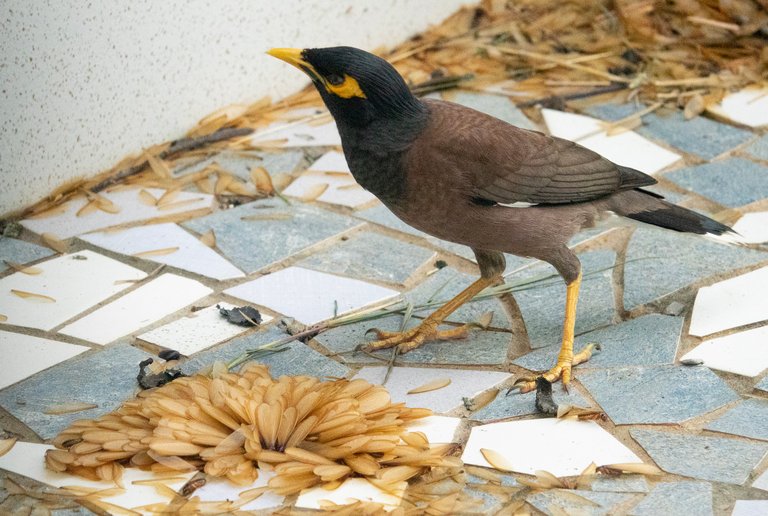
However, being under a roof most of the birds stayed away so I swept up the majority of termites and dumped them in a big pile in a more open area where I could watch what was going on more easily. There then followed two days of many birds slowly picking their way through the pile, including the Owlets coming back the next night.
Added to those already mentioned were Koels and Greater Coucals who I had seen feeding on termites before plus a few new ones: a White-breasted Waterhen, Javan Pond-herons, Baya Weavers and a very cute pair of Lapwing chicks! Only female Weavers took the termites. These birds are usually seed-eaters so I guess they were taking these protein-packages to their growing chicks.
White-breasted Waterhen
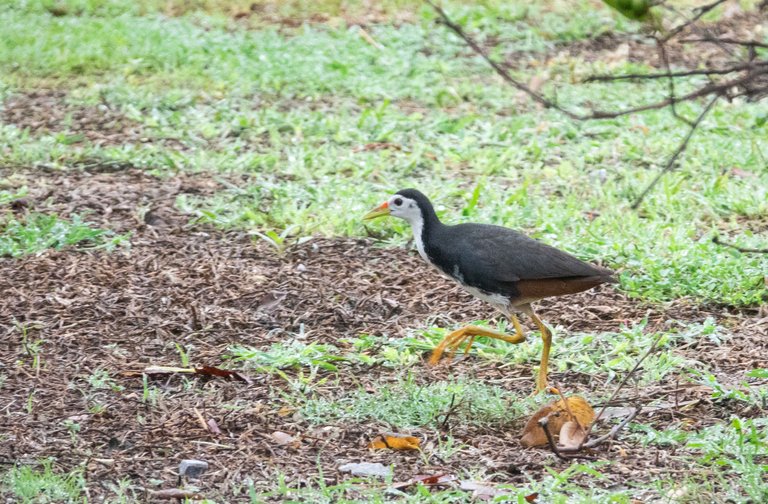
Javan Pond-heron
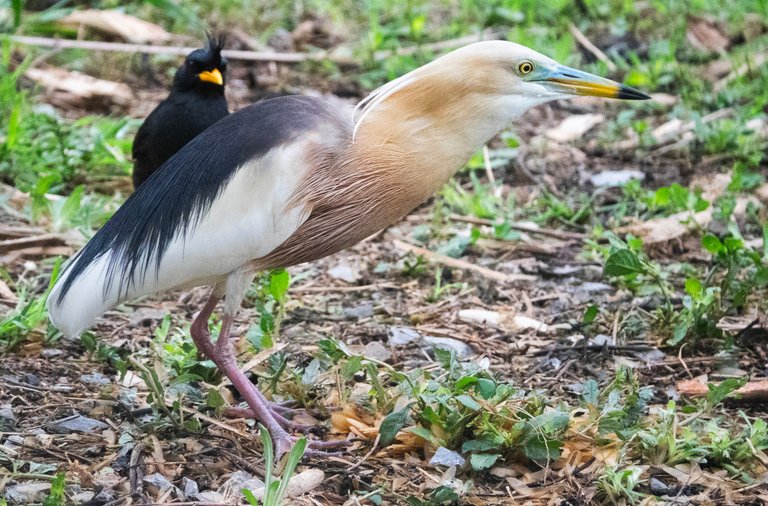
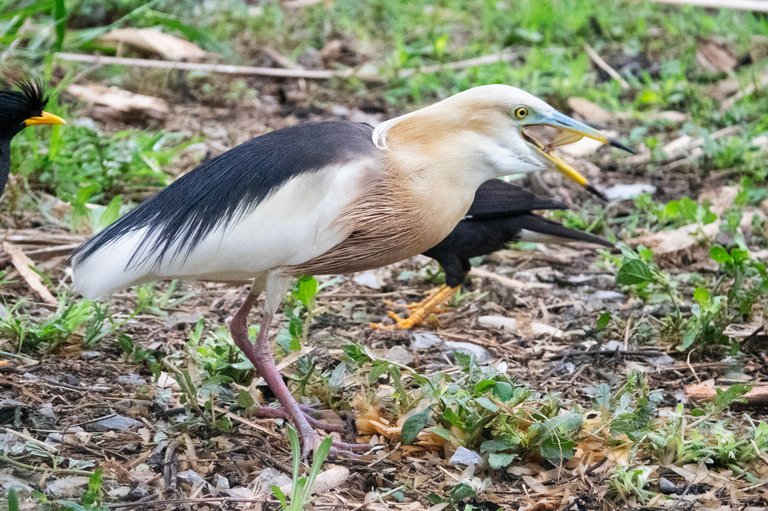
Baya Weavers
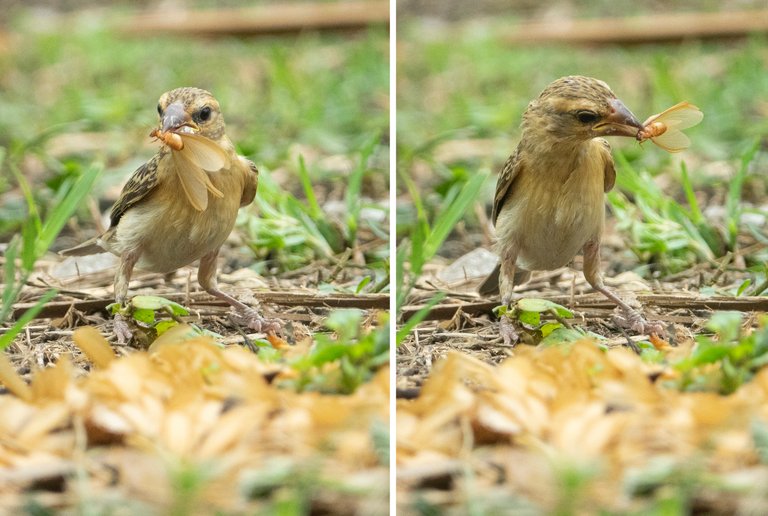
A beak to avoid
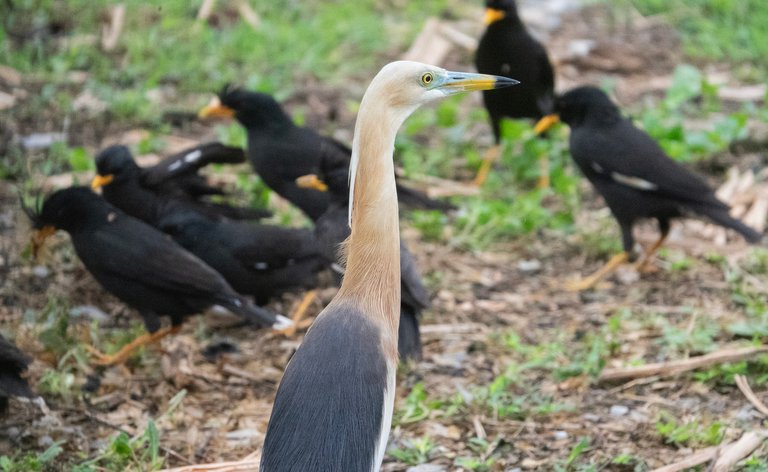
Mynas also staying away from the head-end of this Koel
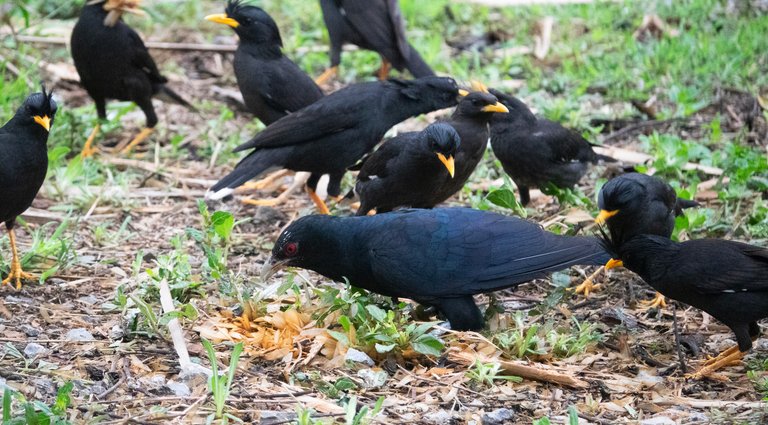
Red-wattled Lapwing chick
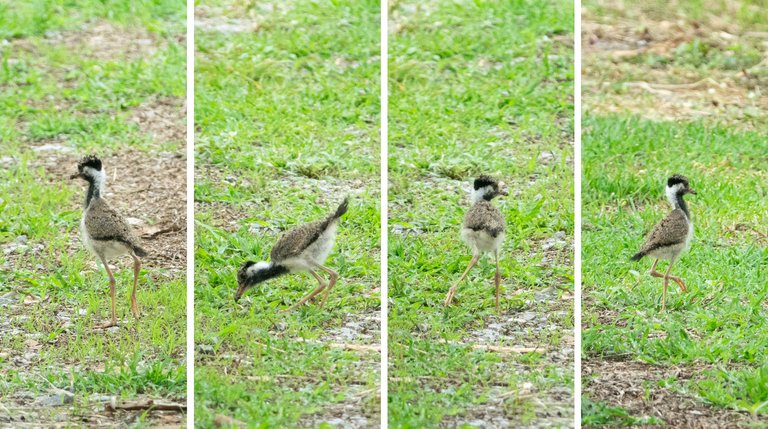
By far the most numerous were the Great Mynas with up to about 20 around the pile at once. They kept out of beak-range of the larger birds, especially the Pond-heron's long dagger, but they also reluctantly gave the slightly larger Common Myna some space if it chased them. They were always lively and noisy with disputes that were impossible to follow but fascinating to watch.
Great Mynas in charge of the pile...
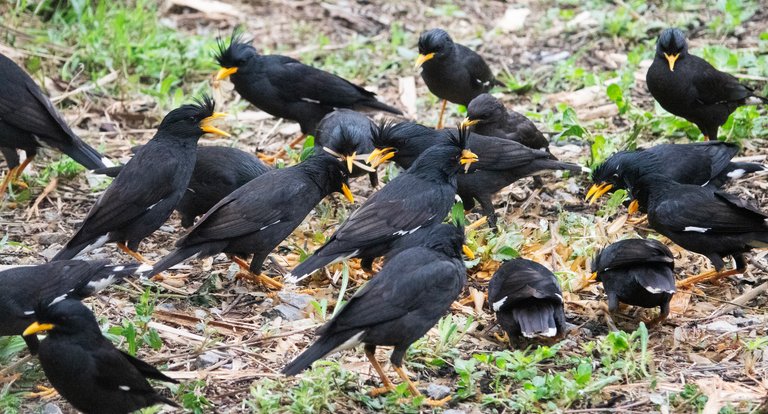
...until a Common Myna struts through
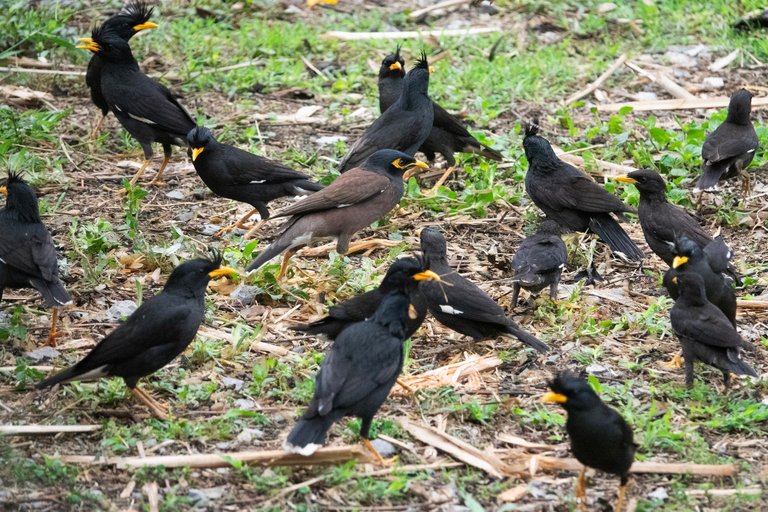
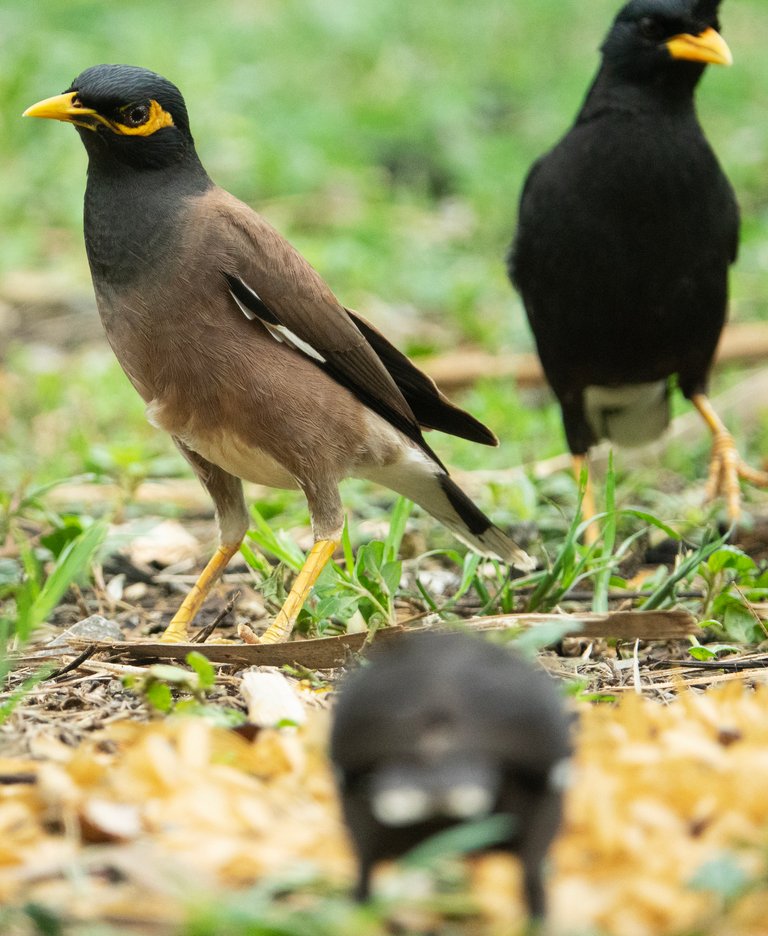
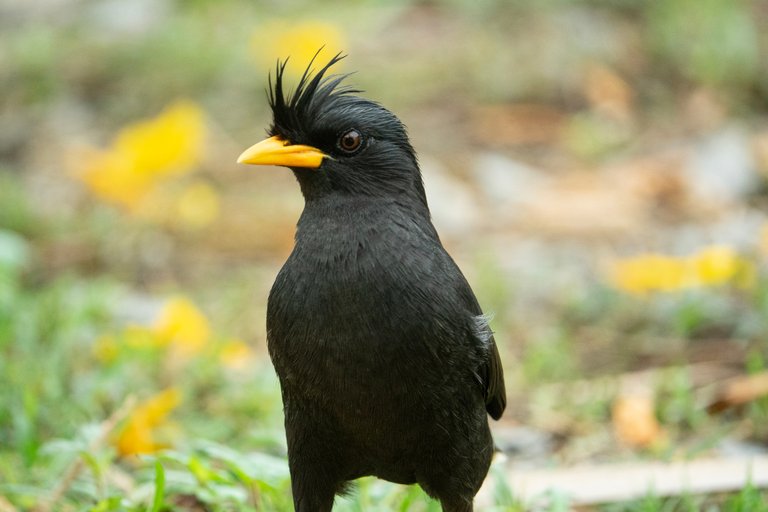
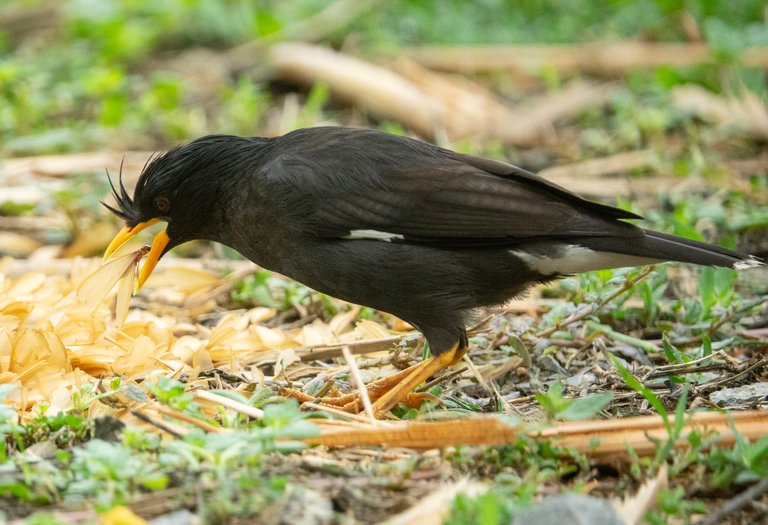
Joining the feast in quieter moments was a Striped Ground-squirrel.
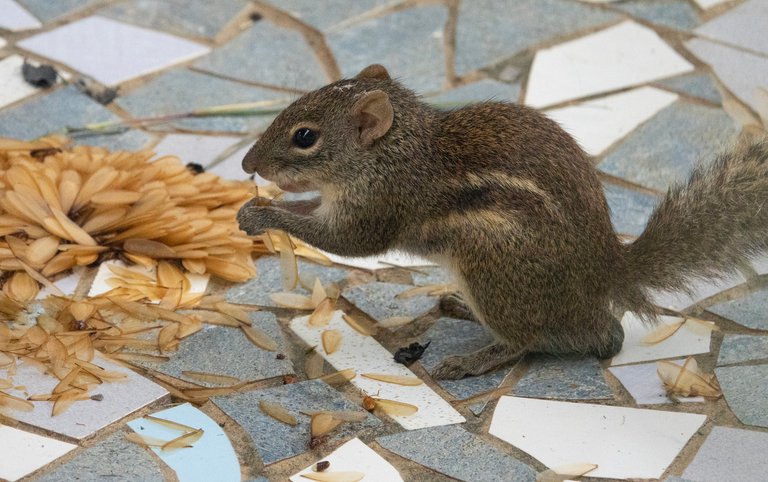
Weeks later I still find some termite wings lying around the garden, which takes me back to the avian feeding frenzy. I wish I could come up with a better estimate of just how many termites there were but the best I can do is guess that the pile I made probably contained several thousand termites. And my list of termite-eating birds in our garden is now 16 species.
So dainty...
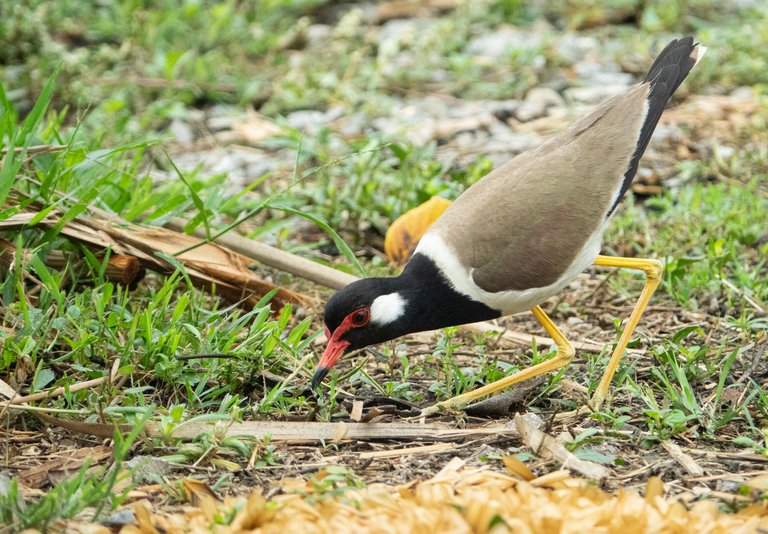
...less so
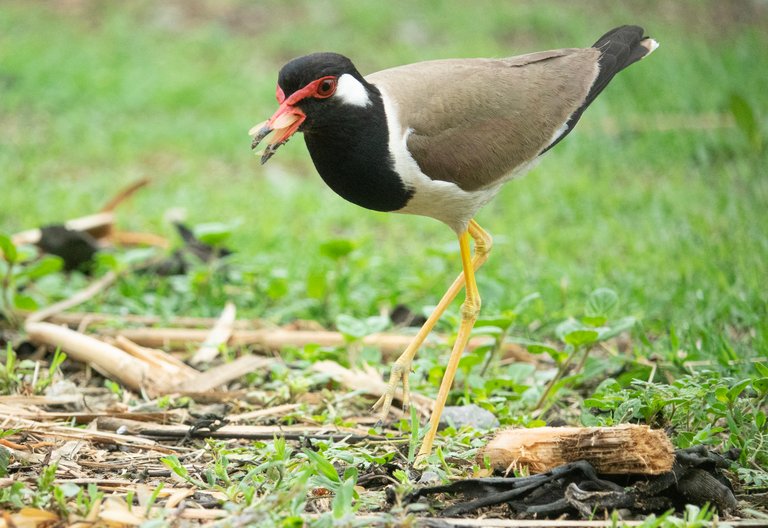
Pied Starlings are perhaps my favourite termite-eaters for their busy, no-nonsense attitude
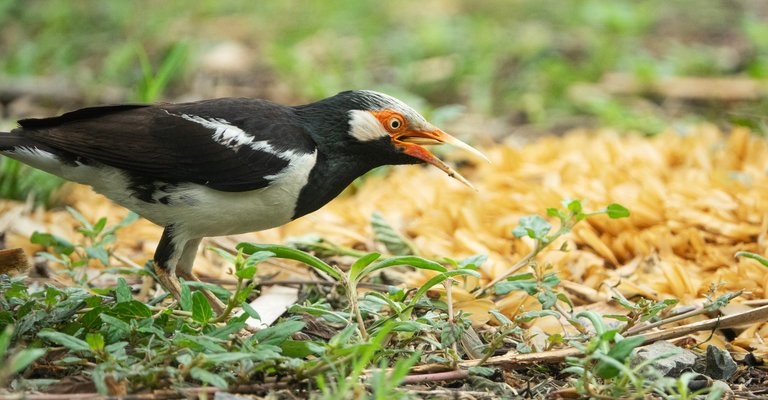
Another termite disappears
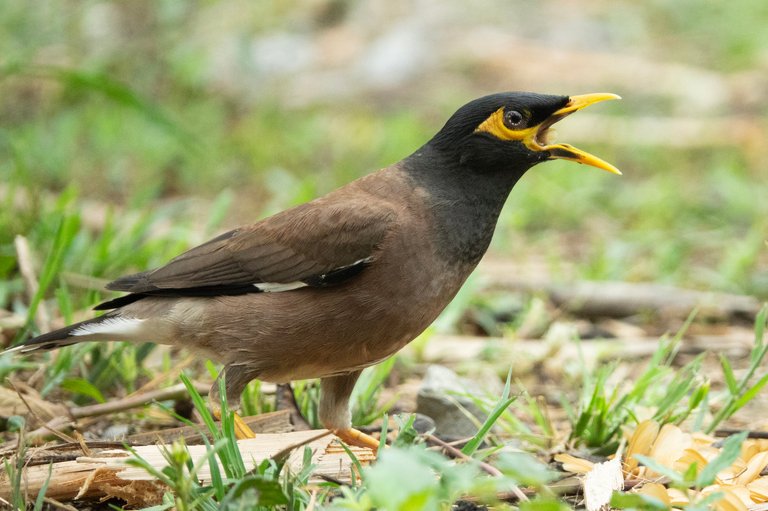
I'm not sure what happened to its head feathers but it's not bad camouflage in the right place
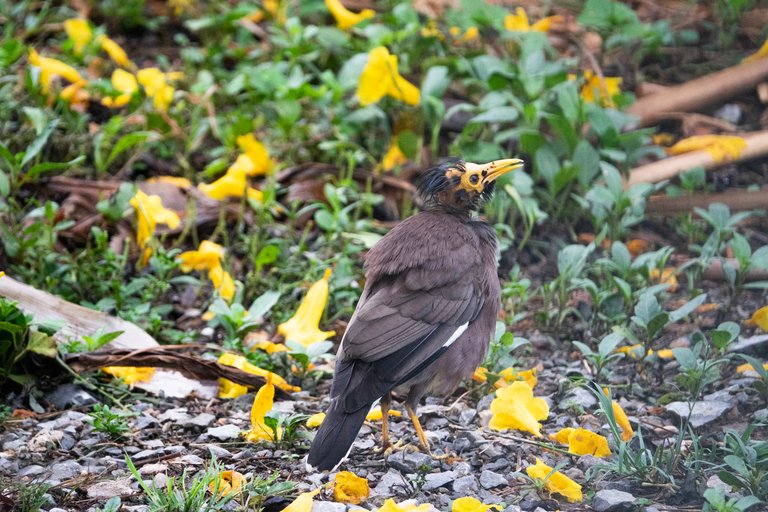
Finally, I would like to thank all those hectic but ultimately tragic termites who provided me with such a great opportunity to watch the birds and other wildlife in our garden without having to try very hard.
Fluffed with satisfaction
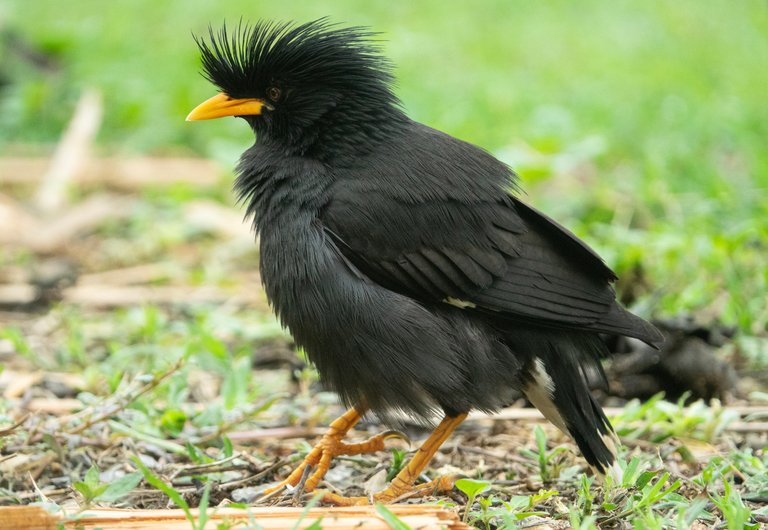
After lunch, time to launch



Has sido curado por @visualblock / You've been curated by @visualblock
Bienvenidas delegaciones / Delegations welcome
Trail de Curación / Curation Trail
Vota por nuestro Testigo aliado - @hispapro / Vote for our allied Witness - @hispapro
Más información sobre el testigo aquí / More information about the witness here
What a feast! My cats love catching and eating them too
I can imagine they must be great fun for cats!
Enjoy your meal together 😄
Birds flock in from every direction, different sizes, what dramatic scenes happen when the termites rise!
"Fluffed with satisfaction" is not a bird we see, love the 'hair-do'. Most familiar where you are not the same, same reaction though!
Excellent photography throughout, would love to see an owl again.
@tipu curate
Upvoted 👌 (Mana: 41/71) Liquid rewards.
Many thanks! I am always hopeful for an owl and hear them quite often but very rarely get a view of one.
Always exciting to have a sighting of an owl, not easy to capture in daylight hours, you got some superb photography here.
Beautiful pictures 👍
Thanks!
What a feast! I love these birdwatching opportunities, thanks for sharing; so many stunning birds! !BEER
Thank you. They are wonderful and something I look forward to every year at the beginning of the rainy season.
View or trade
BEER.Hey @hadrianwild, here is a little bit of
BEERfrom @pardinus for you. Enjoy it!Learn how to earn FREE BEER each day by staking your
BEER.That's interesting that they tried to hide under each other instead of under other things. Reminds me of how the schools of fish do, gather into a swirling fish ball when the predators are near. I don't think it saves them either, but it is an interesting thing they do.
Now everyone is happy and full except for the termites.